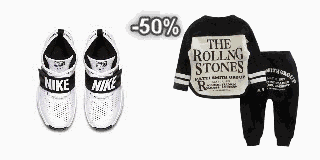Ethereum vs Solana in 2025: Which Blockchain Deserves Your Investment?
In the world of blockchain, few rivalries are as significant or as heated as Ethereum vs Solana. While Ethereum is the undisputed pioneer of smart contracts and DeFi, Solana has risen as a high-speed, low-cost alternative that has carved out its own space in the Web3 ecosystem.
Now, in 2025, this rivalry has matured into a real technological and economic showdown. Which of the two should you trust with your investment? Which one will be powering the next wave of decentralized applications and financial systems?
This article delivers a deep, expert-backed analysis of Ethereum and Solana in today’s context looking at scalability, security, decentralization, and adoption while helping you make smarter, long-term investment decisions.
Ethereum vs Solana: Understanding the Core Difference
Let’s start with the basics. Ethereum, launched in 2015, was the first programmable blockchain and currently powers the largest number of decentralized applications (dApps). It uses Ethereum Virtual Machine (EVM) to run smart contracts, and its transition to Proof of Stake (PoS) via the Ethereum 2.0 upgrade in 2022 drastically improved its energy efficiency and scalability.
Solana, on the other hand, launched in 2020 and quickly gained attention for its unique consensus mechanism a hybrid of Proof of History (PoH) and Proof of Stake. This allowed Solana to process thousands of transactions per second (TPS), with minimal fees and near-instant finality.
This distinction between scalability vs. decentralization is at the heart of the Ethereum vs Solana debate.
Performance & Scalability in 2025
Solana: Speed King with Web2-Level UX
As of 2025, Solana continues to dominate in raw transaction speed. It averages over 65,000 TPS and boasts finality in under a second. Projects like Helium, Render Network, and Star Atlas have migrated or launched on Solana to take advantage of its low fees and scalability.
Moreover, the Solana Mobile Stack and Saga phone have begun to make real headway in pushing Web3 into mobile ecosystems. These advancements are making Solana particularly appealing for consumer-facing dApps, gaming, and payments.
Ethereum: Still the Backbone of DeFi
Ethereum, despite being slower (15–30 TPS natively), has scaled through Layer-2 rollups like Arbitrum, Optimism, and Base. These rollups now handle the majority of Ethereum’s transactional load, reducing costs and increasing speed without compromising decentralization.
Ethereum remains the go-to platform for institutional-grade DeFi. In 2025, it still hosts over 60% of the total value locked (TVL) in decentralized finance protocols, including giants like Uniswap, Aave, and MakerDAO.
Security and Decentralization
Ethereum: The Most Battle-Tested Chain
Security is Ethereum’s greatest strength. With over 7,000 active validator nodes, a long-standing developer community, and a mature governance model, Ethereum has become the most trusted blockchain for large-scale protocols and serious capital.
In Ethereum vs Solana, if you’re prioritizing decentralization and trust-minimized infrastructure, Ethereum takes the crown.
Solana: Rapid Growth, But Some Centralization Concerns
Solana has faced criticism for centralization, especially after major outages in 2022 and 2023. While the network has become significantly more stable in 2025, and the validator count has grown, it still trails Ethereum in terms of decentralization.
However, it’s worth noting that Solana is investing heavily in infrastructure decentralization, including improvements to RPC nodes and light clients for mobile and browser-based users.
Developer Ecosystem and dApp Landscape
Ethereum remains dominant in terms of developer activity. According to Electric Capital’s 2025 Developer Report:
-
Ethereum has over 6,000 monthly active developers
-
Solana has around 1,800 monthly active developers
That said, Solana's developer tooling has dramatically improved, thanks to initiatives like Solana Playground and the adoption of Anchor framework, making it easier for new devs to build efficiently.
Real-World dApps in 2025
-
Uniswap (Ethereum Layer-2): Continues to be the leader in decentralized exchanges, with $12B+ in daily trading volume.
-
Jito and Drift (Solana): New-age DeFi protocols leveraging MEV protection and sub-second trade finality.
-
Lens Protocol (Ethereum): Leading decentralized social media platform, thriving on the Polygon PoS chain.
Market Sentiment and Institutional Interest
Ethereum continues to attract institutional investors. BlackRock’s Ethereum ETF and Fidelity’s ETH staking fund have solidified Ethereum’s position as a regulated, blue-chip crypto asset.
Solana, however, has surprised analysts with its retail momentum. In 2025, it’s the second-most-held coin on Robinhood and leads NFT trading volumes through platforms like Magic Eden.
The Ethereum vs Solana conversation is no longer just about performance it’s about audience: Ethereum leans toward institutions and DeFi whales, while Solana dominates the consumer Web3 experience.
Tokenomics and Investment Considerations
Ethereum (ETH):
-
Supply: Dynamic, with EIP-1559 burn mechanism reducing total ETH in circulation
-
Staking: 27M+ ETH staked, rewarding validators with yield
-
Use Case: Gas fees, staking, collateral in DeFi, governance
Solana (SOL):
-
Supply: Fixed inflation with gradual reduction over time
-
Staking: >70% of SOL is staked, offering attractive APR
-
Use Case: Gas fees, validator incentives, NFT minting, payments
Expert Opinion: Ethereum vs Solana in 2025 and Beyond
Most analysts agree that Ethereum is here to stay as the foundational layer for decentralized finance and institutional-grade dApps. Solana, on the other hand, is carving a niche in high-performance, low-cost, user-centric applications.
-
Bankless: “Ethereum is the settlement layer of Web3. Solana is its distribution layer.”
-
Messari Research: “In a multi-chain future, both Ethereum and Solana can coexist one focused on trust, the other on scale.”
Final Verdict: Which Should You Bet On?
If you're looking for security, deep liquidity, and institutional integration, Ethereum is the obvious choice. If you’re chasing speed, affordability, and mobile-first Web3 adoption, Solana is tough to beat.
But the wisest move? Diversify. In 2025, the multi-chain world is real, and both Ethereum and Solana are positioned to thrive just in different roles.





